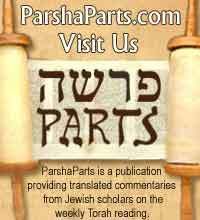Amihai Mazar, Eleazar L. Sukenik Professor of Archaeology at the Hebrew University, revealed that the first apiary (beehive colony) dating from the Biblical period has been found in excavations he directed this summer at Tel Rehov in Israel's Beth Shean Valley. This is the earliest apiary to be revealed to date in an archaeological excavation anywhere in the ancient Near East, said Prof. Mazar. It dates from the 10th to early 9th centuries B.C.E.
Each row contained at least three tiers of hives, each of which is a cylinder composed of unbaked clay and dry straw, around 80 centimeters long and 40 centimeters in diameter. One end of the cylinder was closed and had a small hole in it, which allowed for the entry and exit of the bees. The opposite end was covered with a clay lid that could be removed when the beekeeper extracted the honeycombs. Experienced beekeepers and scholars who visited the site estimated that as much as half a ton of honey could be culled each year from these hives.
Prof. Mazar emphasizes the uniqueness of this latest find by pointing out that actual beehives have never been discovered at any site in the ancient Near East. While fired ceramic vessels that served as beehives are known in the Hellenistic and Roman periods, none were found in situ, and beekeeping on an industrial level such as the apiary at Tel Rehov is hitherto unknown in the archaeological record. Pictorial depictions of apiaries are known from Pharaonic Egypt, showing extraction of honey from stacked cylinders which are very similar to those found at Tel Rehov.
The term 'honey' appears 55 times in the Bible, 16 of which as part of the image of Israel as 'the land of milk and honey'. It is commonly believed that the term refers to honey produced from fruits such as dates and figs. Bees' honey, on the other hand, is mentioned explicitly only twice, both related to wild bees. The first instance is how Samson culled bees' honey from inside the corpse of the lion in the Soreq Valley (Judges 14: 8-9). The second case is the story of Jonathan, King Saul's son, who dipped his hand into a honeycomb during the battle of Mikhmash (Samuel I 14:27).
While the Bible tells us nothing about beekeeping in Israel at that time, the discovery of the apiary at Tel Rehov indicates that beekeeping and the extraction of bees' honey and honeycomb was a highly developed industry as early as the First Temple period. Thus, it is possible that the term 'honey' in the Bible indeed pertains to bees' honey.
Cultic objects were also found in the apiary, including a four-horned altar adorned with figures of naked fertility goddesses, as well as an elaborately painted chalice. This could be evidence of deviant cultic practices by the ancient Israelites related to the production of honey and beeswax.
Study of the beehives found at Tel Rehov is being conducted with the participation of various researchers. Dr. Guy Bloch of the Silberman Institute of Life Sciences of the Hebrew University is studying the biological aspects of the finds; he already discovered parts of bees' bodies in the remains of honeycomb extracted from inside the hives. Dr. Dvori Namdar of the Weizmann Institute of Science succeeded in identifying beeswax molecules from the walls of the beehives, and Prof. Mina Evron from Haifa University is analyzing the pollen remains in the hives.
Dating of the beehives was done by measuring the decaying of the 14C isotope in organic materials, using grains of wheat found next to the beehives. This grain was dated at the laboratory of Groningen University in Holland to the period between the mid-10th century B.C.E. until the early 9th century B.C.E. This is the time period attributed to the reign of King Solomon and the first kings of the northern Kingdom of Israel following the division of the monarchy. The city of Rehov is indeed mentioned in an Egyptian inscription dating to the time of the Pharaoh Shoshenq I (Biblical Shishak), whom the Bible notes as the contemporary of King Solomon and who invaded Israel following that monarch's death.
A particularly fascinating find at the site is an inscription on a ceramic storage jar found near the beehives that reads 'To nmsh'. This name was also found inscribed on another storage jar from a slightly later occupation level at Tel Rehov, dated to the time of the Omride Dynasty in the 9th century BCE. Moreover, this same name was found on a contemporary jar from nearby Tel Amal, situated in the Gan HaShelosha National Park (Sachne).
The name 'Nimshi' is known in the Bible as the name of the father and in several verses the grandfather of Israelite King Jehu, the founder of the dynasty that usurped power from the Omrides (II Kings: 9-12). It is possible that the discovery of three inscriptions bearing this name in the same region and dating to the same period indicates that Jehu's family originated from the Beth Shean Valley and possibly even from the large city located at Tel Rehov. The large apiary discovered at the site might have belonged to this illustrious local clan.
References:
The Hebrew University of Jerusalem
Picture credits:
Hebrew University photos by Amihai Mazar
 Always Fresh: Mr Bagel Jlinks
Always Fresh: Mr Bagel Jlinks: Ancient Beehives * milk and honey * Tel Rehov * Tel Rehov and Beehives * Tel Rehov Honey * Tel Rehov archaeology * Mr Bagel Jlinks * Jewish * Mr Bagel * BagelBlogger * Bagel Blogger * Jew


 Move your mouse over to display Bagel menu.
Move your mouse over to display Bagel menu.














































 Tanach with Rashi
Tanach with Rashi Megillah & Commentary
Megillah & Commentary Ethics of the Fathers
Ethics of the Fathers Parshah Studies
Parshah Studies Maimonides' Mishneh Torah
Maimonides' Mishneh Torah Chassidic Texts
Chassidic Texts Prayers
Prayers























0 Comments:
Post a Comment